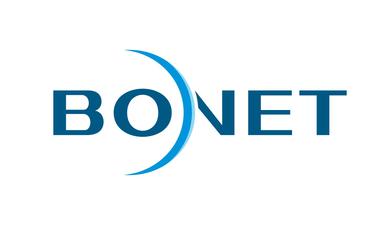Analysis: Trends in China's Hardware Foreign Trade Industry Amid the Global Economy
Core Insight:China's hardware export sector demonstrates resilience in a challenging global economic landscape, undergoing profound structural adjustment and transformation. Opportunities coexist with challenges. Future trends will center onvalue chain upgrading, market diversification, product intelligence/greenification, supply chain resilience, and digital empowerment.

I. Key Characteristics of the Current Global Economy (Context)
-
Slowing Growth & High Uncertainty:
-
Aggressive interest rate hikes by major economies (US, EU) to combat inflation are suppressing demand and lowering growth forecasts.
-
Ongoing geopolitical conflicts (e.g., Ukraine war) disrupt energy, food, and supply chains, fueling uncertainty.
-
Rising trade protectionism and "de-globalization" sentiments.
-
(Visual: Chart showing declining global GDP growth forecasts & rising policy uncertainty index)
-
-
Supply Chain Reshoring & Regionalization:
-
Pandemic exposure led to strategies like "China+1" and nearshoring/friend-shoring for diversification and resilience.
-
Regional trade agreements (e.g., RCEP) gain prominence, boosting intra-regional trade.
-
(Visual: Map illustrating shifting global supply chain flows and key trade bloc regions)
-
-
High-Cost Environment:
-
Energy and raw material prices remain elevated despite retreating from peaks.
-
Volatile global logistics costs; rising labor costs in some regions.
-
Significantly higher financing costs due to interest rate hikes.
-
(Visual: Line chart tracking key commodity prices (steel, copper) and freight rates over time)
-
-
Accelerated Green & Sustainable Transition:
-
Policies like the EU's Carbon Border Adjustment Mechanism (CBAM) tax high-carbon products.
-
Growing global emphasis on ESG (Environmental, Social, Governance) criteria.
-
(Visual: Icon representing CBAM/ESG regulations alongside a green factory graphic)
-
-
Continuous Technological Advancement:
-
Rapid adoption of automation, digitalization, and smart tech in manufacturing and trade.
-
(Visual: Icons for AI, IoT, Robotics applied to a factory setting)
-
II. Current State & Core Challenges for China's Hardware Exporters
-
Erosion of Traditional Advantages:
-
Diminishing Cost Edge:Rising domestic costs (labor, land, environmental compliance) weaken competitiveness for low/mid-range hardware vs. emerging producers (Vietnam, India, Mexico).
-
Order Diversion:Shift of labor-intensive, low-value hardware orders to alternative manufacturing hubs.
-
Increasing Trade Barriers:More anti-dumping/countervailing duties, technical barriers (TBT), especially on environmental, safety, and labor standards.
-
(Visual: Bar chart comparing manufacturing costs across key countries; Map showing order flow shifts)
-
-
Demand-Side Pressure:
-
High inflation and slowing growth in key markets (EU, US) dampen consumer spending on durable goods (including hardware/tools), prolonging inventory cycles.
-
Volatility in global real estate markets (impacted by rates) affects demand for construction hardware.
-
(Visual: Line chart showing declining consumer confidence/retail sales in US/EU)
-
-
Supply Chain & Cost Pressures:
-
Logistics costs remain volatile and above pre-pandemic levels.
-
Fluctuating raw material (steel, non-ferrous metals) prices squeeze margins.
-
Exchange rate volatility creates forex risks.
-
(Visual: Graphic showing interconnected cost pressures - materials, logistics, FX)
-
III. Key Development Trends for China's Hardware Foreign Trade
-
Ascending the Value Chain (Central Trend):
-
Product Upgrading:Shift from low-value, standardized basics (screws, hinges) to high-value, precision, customized, smart products (smart locks, high-performance tools, EV/New Energy hardware, precision connectors).
-
Tech-Driven Innovation:Increased R&D in materials science, surface treatment, advanced processes (automation, precision machining) to enhance performance and reliability.
-
Brand Building:Transition from OEM/ODM to OBM (Own Brand Manufacturing) to build global recognition and premium pricing, moving beyond price wars.
-
(Visual: Pyramid graphic showing value chain ascent; Images contrasting basic vs. high-tech hardware)
-
-
Accelerated Market Diversification (Essential Path):
-
Expand in Emerging Markets:Actively target Belt & Road countries, ASEAN, Middle East, Latin America, Africa - driven by industrialization and urbanization needs.
-
Leverage Trade Pacts:Maximize benefits from agreements like RCEP to reduce tariffs and barriers within the region.
-
Consolidate Mature Markets:Maintain/grow share in EU, US, Japan, South Korea by offering higher-value, specialized products and services.
-
(Visual: World map highlighting target market regions; RCEP logo)
-
-
Greenification & Sustainability (Imperative & Opportunity):
-
Meet Low-Carbon Demands:Accelerate green manufacturing upgrades (energy efficiency, emission reduction), obtain certifications (ISO 14001), comply with CBAM.
-
Develop Green Products:Innovate eco-friendly hardware (e.g., for energy-efficient buildings, new energy equipment).
-
Embrace Circularity:Explore material recycling, enhance product durability and recyclability.
-
(Visual: Icons for green factory, recycling, eco-certificates; Product examples)
-
-
Intelligence & Digital Transformation (Enablers):
-
Smart Manufacturing:Upgrade factories (automation, IoT) for higher efficiency, quality, and flexibility.
-
Smart Products:Grow demand for IoT-enabled hardware (smart locks, security hardware, tool diagnostics).
-
Digital Trade:Utilize B2B platforms, independent websites, social media marketing, digital payments, virtual trade shows for efficient customer acquisition and engagement. Leverage data analytics.
-
(Visual: Smart factory schematic; Icons for digital marketing tools; Smart hardware product)
-
-
Enhancing Supply Chain Resilience & Agility (Survival Foundation):
-
Diversified Footprint:Consider strategic production/warehousing locations (domestic central/western China, overseas near key markets/cost-advantage areas).
-
Strengthened Collaboration:Build transparent, collaborative relationships with suppliers/customers for better information flow and responsiveness.
-
Flexible Production:Develop capabilities for small-batch, rapid-response manufacturing to meet fragmented and customized orders.
-
(Visual: Map showing potential diversified supply chain nodes; Graphic showing supplier collaboration)
-
-
From Products to Solutions/Services (Value Extension):
-
Offer value-added services: design support, technical consulting, installation/maintenance, supply chain management.
-
Provide integrated hardware solutions for specific industries (New Energy, Automotive, Smart Home).
-
(Visual: Graphic shifting from "Product" box to "Solution/Service" box with added service icons)
-
IV. Conclusion & Outlook
-
Significant Challenges:Global slowdown, rising costs, intense competition, and complex trade environment exert real pressure. Low/mid-end capacity faces continued squeeze.
-
Tangible Opportunities:
-
Global industrial upgrades (EVs, New Energy, Smart Manufacturing) fuel demand for high-end, specialized hardware.
-
Belt & Road and emerging market industrialization offer vast growth potential.
-
China's strengths remain:comprehensive industrial ecosystem, powerful clustering effects, improving R&D, and responsive supply chains.
-
Digital and green transitions, while challenging, are springboards for renewed competitiveness.
-
-
Path Forward:Success lies inHigh-Quality Development. Leading companies will:
-
Drive continuousInnovationfor higher value.
-
Actively pursueMarket Diversification.
-
Commit toGreen Manufacturing&Digital Transformation.
-
BuildAgile, Resilientsupply chains.
-
DevelopStrong Global Brandsand offerValue-Added Services.
-
Final Verdict:Despite strong headwinds, China's hardware export industry, leveraging its deep foundations, adaptability, and clear transformation path, is positioned to achieve structural optimization and sustainable growth amidst global economic realignment. The critical shift is from"Volume-Driven" to "Value-Driven"and from"Cost Competition" to "Value Competition."Supportive government policies for trade stability, industrial upgrading, and market exploration will be vital enablers.




